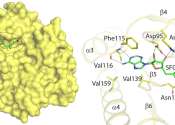Decoding human history with ancient DNA
This year is the 20th anniversary of sequencing the human genome. In honor of this event, a research team led by Prof. FU Qiaomei from the Institute of Vertebrate Paleontology and Paleoanthropology (IVPP) of the Chinese Academy ...








